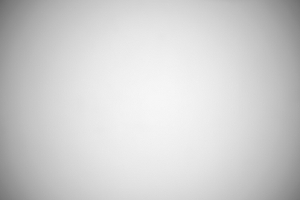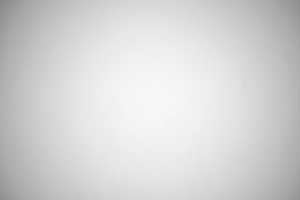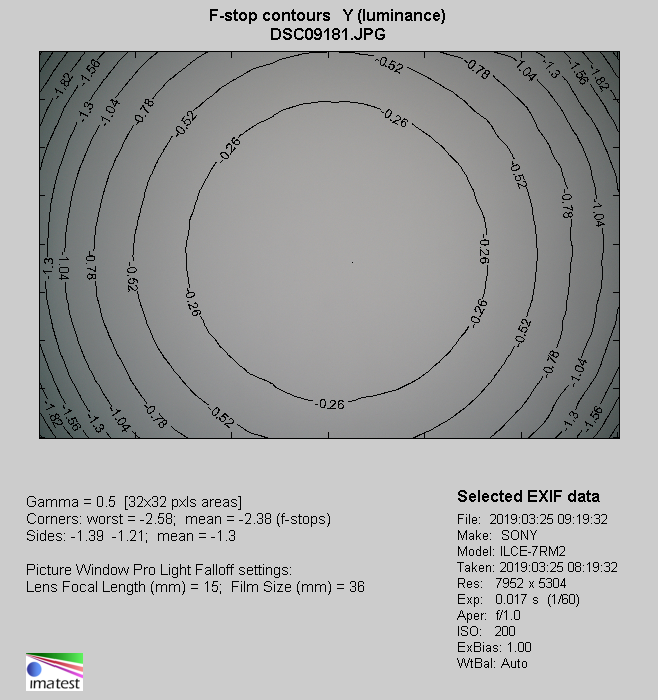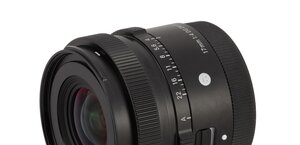Viltrox PFU RBMH 20 mm f/1.8 ASPH
8. Vignetting
| A7R II, APS-C, f/1.8 | A7R II, APS-C, f/2.0 |

|

|
No reasons to worry – at the maximum relative aperture the vignetting reaches a moderate level of 20% (−0.64 EV) and it decreases to 18% (−0.58 EV) on stopping down to f/2.0. By f/2.8 and higher apertures the brightness loss stays around 17% (−0.54 EV).
Please Support UsIf you enjoy our reviews and articles, and you want us to continue our work please, support our website by donating through PayPal. The funds are going to be used for paying our editorial team, renting servers, and equipping our testing studio; only that way we will be able to continue providing you interesting content for free. |
- - - - - - - - - - - - - - - - - - - - - - - - - - - - - - - - - - - - - - - - - - - - - - - -
Now let's see how the situation changes after passing to full frame.
| A7R II, FF, f/1.8 | A7R II, FF, f/2.0 |

|

|
| A7R II, FF, f/2.8 | A7R II, FF, f/4.0 |

|

|
At the maximum relative aperture the light fall-off in the frame corners amounts to as much as 56% (−2.38 EV) and it decreases to 53% (−2.21 EV) on stopping down the aperture to f/2.0. It is a better result than that of the Tokina Firin which had as much as 61% of brightness loss at its maximum relative aperture.
What's interesting, vignetting reacts very slowly to stopping down. By f/2.8 we got 45% (−1.74 EV), and by f/4.0 its level decreased slightly to 43% (−1.61 EV). Further stopping down didn't have any measureable influence on vignetting; it means a high result of over 40% is maintained even by f/8 and f/16.
It is a very curious situation. In the previous chapter we noticed lack of truncation of light circles; here we deal with very sluggish vignetting decrease even after significant stopping down of the aperture. The conclusion can be only one: glass and coating of this lens influence vignetting the most. Perhaps the producer used such anit-reflective coatings which provide weak transmission for light falling at obtuse angles. You cannot also exclude a pronounced influence connected to the lack of telecentricity and very big angles at which rays of light fall on microelements of the sensor.
| Sony A7R II, JPEG, f/1.8 |
 |






